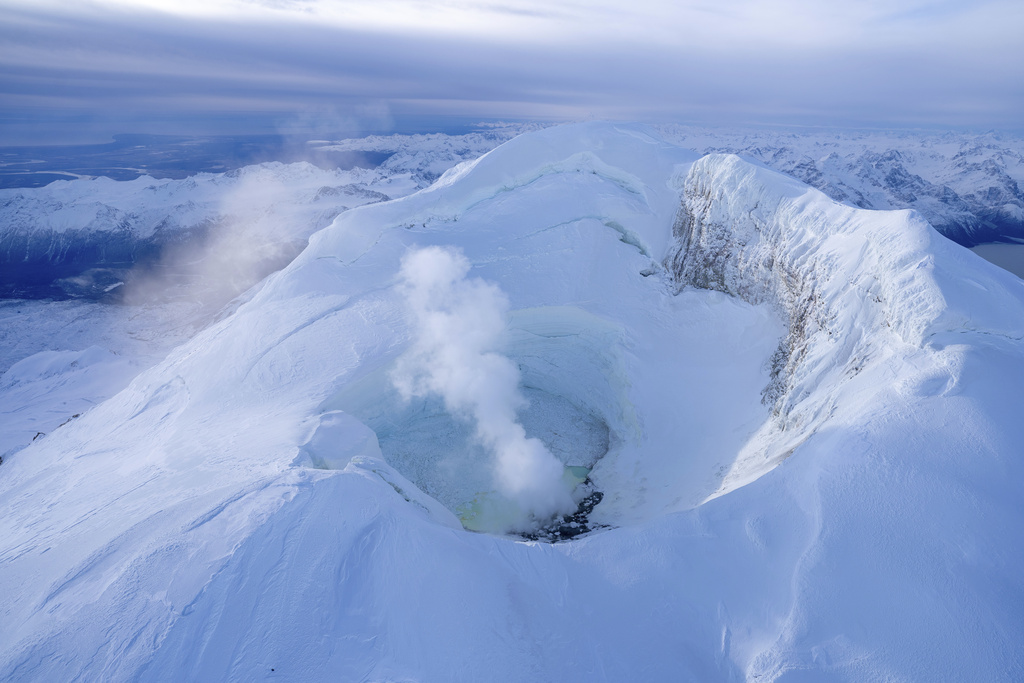Scientists Warn: Volcano Near Alaska’s Biggest City May Erupt Within Weeks or Months

ANCHorage, ALASKA (AP) — Signs of volcanic activity have emerged near Alaska’s most populous city, prompting experts to indicate that the possibility of an eruption from Mount Spurr within the coming weeks or months has risen.
The Alaska Volcano Observatory reported on Wednesday that they observed "substantially increased volcanic gas emissions" during recent flyovers. They stated that these indications suggest an eruption is possible in the coming weeks or months, although it isn’t guaranteed.
The observatory stated in a release, "We anticipate observing greater seismic activity, increased gas emissions, and elevated surface temperatures before an eruption, should it happen. This heightened unease could offer us several days to weeks of extra notice."
What is Mount Spurr?
This is an 11,070-foot (3,374-meter) high volcano covered with ice and snow, located approximately 80 miles (129 kilometers) northwest of Anchorage.
Mount Spurr is among 53 volcanoes in Alaska Those that have been active in the past 250 years. It features two primary openings.
What was the date of Mount Spurr's most recent eruption?
The most recent recorded eruption at the summit vent occurred over 5,000 years ago. In contrast, the Crater Peak vent had an eruption in 1953 and three eruptions in 1992, as reported by the observatory. This particular Crater Peak vent lies approximately 2 miles (3 kilometers) south of the main summit.
Several instances of heightened seismic or related activity have occurred since then, such as from 2004 to 2006; however, no additional eruptions have taken place. Last October The observatory upgraded Mount Spurr’s alert level from green to yellow due to a noticeable rise in seismic activity and detected ground deformation through satellite imagery.
The probable result of the ongoing disturbances would be an outbreak or outbreaks akin to those witnessed in 1953 and 1992, according to the observatory.
"It is equally plausible that no eruption will occur, and the current activity gradually diminishes, or alternatively, a less significant eruption might take place," John Power, a geophysicist with the U.S. Geological Survey at the observatory, stated in an email.
What effects might an eruption cause?
The volcanic activity over the past hundred years typically continued for a duration of three to seven hours, generating ash plumes that ascended higher than 50,000 feet (15,240 meters) above sea level. These events also led to ash deposits in areas around south-central Alaska, as reported by the observatory.
In 1992, an ashfall of approximately a quarter-inch in Anchorage led residents to remain indoors or wear masks when venturing outdoors to prevent inhaling the ash. The dust cloud even reached as far as Greenland.
Volcanic ash is jagged and sharp, serving as an effective industrial abrasive. This powdered rock can lead to the failure of a jet engine.
The 1992 eruptions prompted the temporary closures of airports in Anchorage and other communities.
Shutting down airports can be far more than just inconvenient in a state where the majority of communities aren’t linked to Alaska’s primary roadway network. Additionally, Ted Stevens Anchorage International Airport ranks as one of the globe’s most active centers for freight transport.